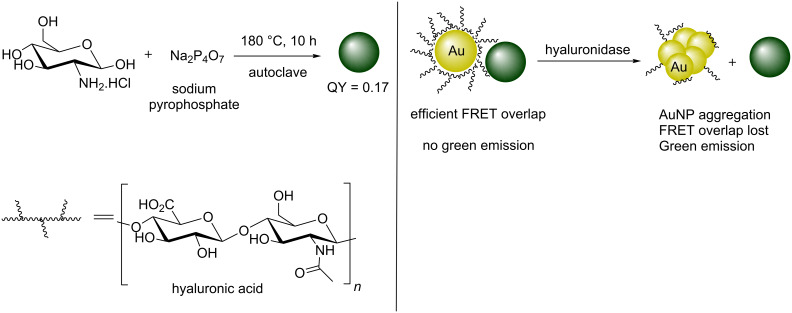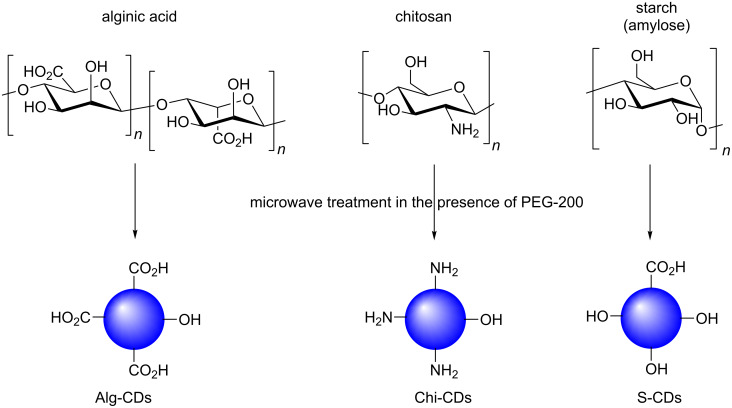Our original publication showns some errors in the structures in Schemes 9, 15, 20, and 22. The corrected schemes are shown in this Correction.
The wrong configuration was depicted for C-4 (carrying the OH group) in the pyranose ring of doxorubicin in Scheme 9; the corrected scheme (Scheme 1) is shown below:
Scheme 1.
Corrected Scheme 9 of the original article. N/P-doped hollow CDs for efficient drug delivery of doxorubicin.
The NH group was missing at C-2 of the GlcNAc residues in Scheme 15; the corrected scheme (Scheme 2) is shown below:
Scheme 2.
Corrected Scheme 15 of the original article. N/P-doped green-emissive CDs working in tandem with hyaluronic acid-coated AuNPs to monitor hyaluronidase activity.
The carbohydrate polymers in Schemes 20 and 22 were depicted as poly-peroxide with one oxygen atom too many in the repeating unit, repectively; the corrected schemes (Scheme 3 and Scheme 4) are shown below:
Scheme 3.
Corrected Scheme 20 of the original article. Different polysaccharide-derived CDs in the presence of PEG-200 and how the starting material composition is conferred to the CD products.
Scheme 4.
Corrected Scheme 22 of the original article. Hyaluronic acid (HA) and glycine-derived CDs, suspected to be decorated in unreacted HA, allowing receptor-mediated cell uptake.






